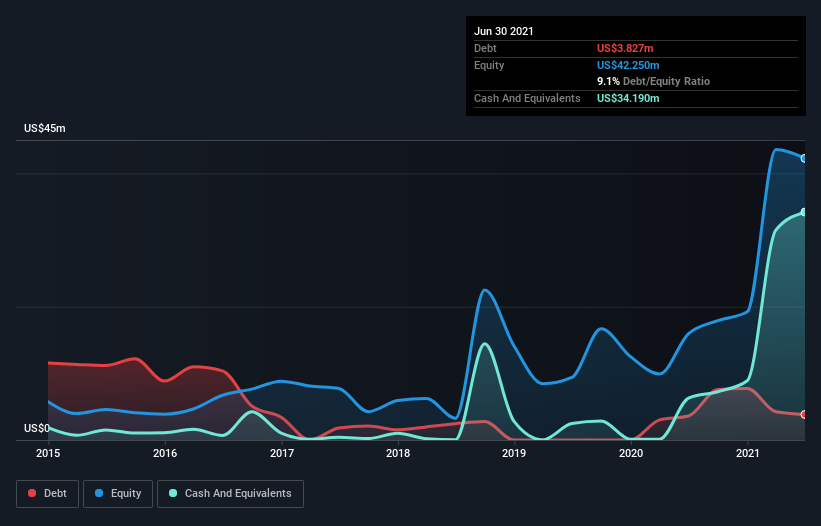SRAX (NASDAQ:SRAX) Is Using Debt Safely
David Iben put it well when he said, 'Volatility is not a risk we care about. What we care about is avoiding the permanent loss of capital.' So it might be obvious that you need to consider debt, when you think about how risky any given stock is, because too much debt can sink a company. We note that SRAX, Inc. (NASDAQ:SRAX) does have debt on its balance sheet. But should shareholders be worried about its use of debt?
When Is Debt Dangerous?
Debt is a tool to help businesses grow, but if a business is incapable of paying off its lenders, then it exists at their mercy. If things get really bad, the lenders can take control of the business. While that is not too common, we often do see indebted companies permanently diluting shareholders because lenders force them to raise capital at a distressed price. By replacing dilution, though, debt can be an extremely good tool for businesses that need capital to invest in growth at high rates of return. When we think about a company's use of debt, we first look at cash and debt together.
Check out our latest analysis for SRAX
What Is SRAX's Debt?
As you can see below, at the end of June 2021, SRAX had US$3.83m of debt, up from US$3.60m a year ago. Click the image for more detail. However, it does have US$34.2m in cash offsetting this, leading to net cash of US$30.4m.
A Look At SRAX's Liabilities
Zooming in on the latest balance sheet data, we can see that SRAX had liabilities of US$21.7m due within 12 months and liabilities of US$313.0k due beyond that. Offsetting these obligations, it had cash of US$34.2m as well as receivables valued at US$2.17m due within 12 months. So it actually has US$14.3m more liquid assets than total liabilities.
This surplus suggests that SRAX has a conservative balance sheet, and could probably eliminate its debt without much difficulty. Succinctly put, SRAX boasts net cash, so it's fair to say it does not have a heavy debt load! When analysing debt levels, the balance sheet is the obvious place to start. But ultimately the future profitability of the business will decide if SRAX can strengthen its balance sheet over time. So if you want to see what the professionals think, you might find this free report on analyst profit forecasts to be interesting.
Over 12 months, SRAX reported revenue of US$20m, which is a gain of 462%, although it did not report any earnings before interest and tax. When it comes to revenue growth, that's like nailing the game winning 3-pointer!
So How Risky Is SRAX?
By their very nature companies that are losing money are more risky than those with a long history of profitability. And we do note that SRAX had an earnings before interest and tax (EBIT) loss, over the last year. And over the same period it saw negative free cash outflow of US$22m and booked a US$23m accounting loss. Given it only has net cash of US$30.4m, the company may need to raise more capital if it doesn't reach break-even soon. The good news for shareholders is that SRAX has dazzling revenue growth, so there's a very good chance it can boost its free cash flow in the years to come. High growth pre-profit companies may well be risky, but they can also offer great rewards. The balance sheet is clearly the area to focus on when you are analysing debt. But ultimately, every company can contain risks that exist outside of the balance sheet. These risks can be hard to spot. Every company has them, and we've spotted 3 warning signs for SRAX (of which 1 makes us a bit uncomfortable!) you should know about.
If you're interested in investing in businesses that can grow profits without the burden of debt, then check out this free list of growing businesses that have net cash on the balance sheet.
This article by Simply Wall St is general in nature. We provide commentary based on historical data and analyst forecasts only using an unbiased methodology and our articles are not intended to be financial advice. It does not constitute a recommendation to buy or sell any stock, and does not take account of your objectives, or your financial situation. We aim to bring you long-term focused analysis driven by fundamental data. Note that our analysis may not factor in the latest price-sensitive company announcements or qualitative material. Simply Wall St has no position in any stocks mentioned.
Have feedback on this article? Concerned about the content? Get in touch with us directly. Alternatively, email editorial-team (at) simplywallst.com.

